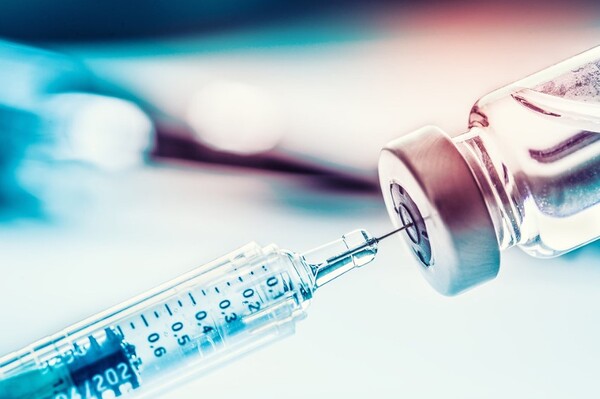
(function(d, s, id) { var js, fjs = d.getElementsByTagName(s)[0]; if (d.getElementById(id)) return; js = d.createElement(s); js.id = id; js.src = “https://connect.facebook.net/en_US/sdk.js#xfbml=1&version=v3.0”; fjs.parentNode.insertBefore(js, fjs); }(document, ‘script’, ‘facebook-jssdk’)); –>
–>
December 6, 2023
On November 30, Texas attorney general Ken Paxton (yes, the same one the left has been trying to oust for a long time, who recently was impeached but was acquitted on all charges) filed a lawsuit on behalf of the state of Texas against Pfizer for misrepresenting the performance of its COVID-19 vaccine by “false, deceptive, and misleading acts and practices in the course of trade and commerce.” The suit was covered in the Epoch Times and American Greatness. Here is a link to the actual 54-page suit, filed in district court in Lubbock County. I read it so you don’t have to (well, if you trust me).
‘); googletag.cmd.push(function () { googletag.display(‘div-gpt-ad-1609268089992-0’); }); document.write(”); googletag.cmd.push(function() { googletag.pubads().addEventListener(‘slotRenderEnded’, function(event) { if (event.slot.getSlotElementId() == “div-hre-Americanthinker—New-3028”) { googletag.display(“div-hre-Americanthinker—New-3028”); } }); }); }
For the Pfizer COVID-19 vaccine clinical trial, eligibility was limited to those who had not previously been infected with COVID-19. The trial counted how many in the vaccine group vs. placebo group caught symptomatic COVID-19 (with a positive test). When we talk about risk reduction for this trial, we mean in catching the virus as defined above due to being vaccinated.
Before proceeding, we need to review Efficacy 101. The math is not that complicated — in fact, it is rather intuitive, yet it is almost never spelled out to the public. Let V = the probability that someone Vaccinated catches symptomatic COVID-19; U = the probability someone Unvaccinated and given a placebo catches symptomatic COVID-19; and E = efficacy. (Technically, “efficacy” is the term used for results in a clinical trial, and “effectiveness” is the term used for results among the general public, but they are often used interchangeably.) Then
E = (U-V)/U.
‘); googletag.cmd.push(function () { googletag.display(‘div-gpt-ad-1609270365559-0’); }); document.write(”); googletag.cmd.push(function() { googletag.pubads().addEventListener(‘slotRenderEnded’, function(event) { if (event.slot.getSlotElementId() == “div-hre-Americanthinker—New-3035”) { googletag.display(“div-hre-Americanthinker—New-3035”); } }); }); }
The numerator, U-V, is the absolute risk reduction (ARR). E is the relative risk reduction (RRR) — that is, the risk reduction due to being vaccinated compared to being unvaccinated. We can also write the equation as E = 1 – V/U. Another measure is the number needed to treat (NNT) to prevent one additional bad outcome — in this case, one additional patient with symptomatic COVID-19. NNT = ⌈1/ARR⌉, the ceiling of 1/ARR — that is, the least integer greater than or equal to 1/ARR.
Ideally, the public should be informed of all three: the RRR, the ARR, and the NNT. If the ARR is very small (see my previous article for an example of this), and thus the NNT is large, you might not want to risk vaccination even if the RRR is large. The suit accuses Pfizer of misrepresentation by presenting only the RRR and not also the ARR and NNT, contrary to FDA guidance.
In the clinical trial for the Pfizer vaccine, U = 0.009251 (162 out of 17,511; the suit unfortunately rounds this to 0.9%), and V = 0.000459 (8 out of 17,411; the suit unfortunately rounds this to 0.04%). In the suit, the use of rounded figures leads to some inaccuracy in the subsequently produced values (the above articles fail to mention this), so for transparency, I will use the more precise figures. Then ARR = U-V = 0.008792 (so just under 0.88%), NNT = 114, and E = 0.950334, which rounds to 95%. The news headlines touted the Pfizer vaccine as being “95% effective,” but using the ARR, the gain is less than 1%, and an NNT of 114 doesn’t sound very reassuring, either. (Don’t forget, too, that for this trial, U and V are not probabilities of death — just probabilities of catching symptomatic COVID-19.)
In addition, the suit accuses Pfizer of 1) relying on just two months of data, even less for some participants, giving a false impression of duration of protection; 2) a fear-mongering campaign through statements and advertising that left the impression that transmission would be halted when it wasn’t; 3) claiming that the vaccine was highly effective against variants like Delta when it wasn’t; 4) not counting those who become symptomatic until seven days following the second dose (without this restriction, in the trial, more of the vaccinated became symptomatic than the unvaccinated; this alone seems to negate entirely the merit of the vaccine); 5) misleading statements by Pfizer’s CEO about the vaccine ending the pandemic and offering lasting protection; and 6) promoting censorship of those not adopting the Pfizer narrative. (See the American Greatness link above for additional alleged serious misconduct not part of the Texas suit.)
The suit claims that Pfizer’s behavior violated both federal and Texas state law and is asking for over $10 million in damages ($10,000 per each violation of the Deceptive Trade Practices Act [DTPA] plus interest and fees.) To me, this doesn’t come close to “drop in the bucket” level. Given that Pfizer’s vaccine brought in tens of billions of dollars in revenues, as mentioned in the suit, even a $100-million fine would be a drop in the bucket and just a cost of doing business. But even if Texas loses, the discovery process might embarrass Pfizer and act as a deterrent to such behavior in future.
As to the merits of the suit, I’m not a lawyer, and I hope I’m wrong, but I’m guessing it will fail. The complaint that “95% effective” is misleading will probably fail because Pfizer at least used the technical definition of effectiveness, FDA guidance notwithstanding. The fact that the MSM were misled in their reporting is irrelevant. The fact that the FDA issued some CYA statements during the process does not change that the FDA probably knew every false and misleading statement Pfizer issued, every questionable action it took, and yet still signed off on both the EUA and approval.
‘); googletag.cmd.push(function () { googletag.display(‘div-gpt-ad-1609268078422-0’); }); document.write(”); googletag.cmd.push(function() { googletag.pubads().addEventListener(‘slotRenderEnded’, function(event) { if (event.slot.getSlotElementId() == “div-hre-Americanthinker—New-3027”) { googletag.display(“div-hre-Americanthinker—New-3027”); } }); }); } if (publir_show_ads) { document.write(“
The court might rule that it is up to the FDA to sanction a company it is steering or has steered through the approval process. It is notable that Paxton avoided suing the FDA itself, probably because the chances of winning against a government agency, certainly on appeal, are near zero. FDA impropriety would be in the jurisdiction of the Executive Branch and congressional oversight.
Maybe Texas has standing on false statements violating the DTPA, but I wonder if the court might still consider the FDA to be the arbiter to prevent chaos. If the suit were relevant only to Lubbock County, I’d guess Pfizer would plead guilty to avoid discovery, pay the fine, and then say it did so to avoid the hassle. But a guilty plea or verdict there would likely lead to suits in other states and even overseas. Stay tuned.
W.A. Eliot is a pseudonym.

Image via Flickr, public domain.
<!–
–>
<!– if(page_width_onload <= 479) { document.write("
“); googletag.cmd.push(function() { googletag.display(‘div-gpt-ad-1345489840937-4’); }); } –> If you experience technical problems, please write to [email protected]
FOLLOW US ON
<!–
–>
<!– _qoptions={ qacct:”p-9bKF-NgTuSFM6″ }; ![]() –> <!—-> <!– var addthis_share = { email_template: “new_template” } –>
–> <!—-> <!– var addthis_share = { email_template: “new_template” } –>





